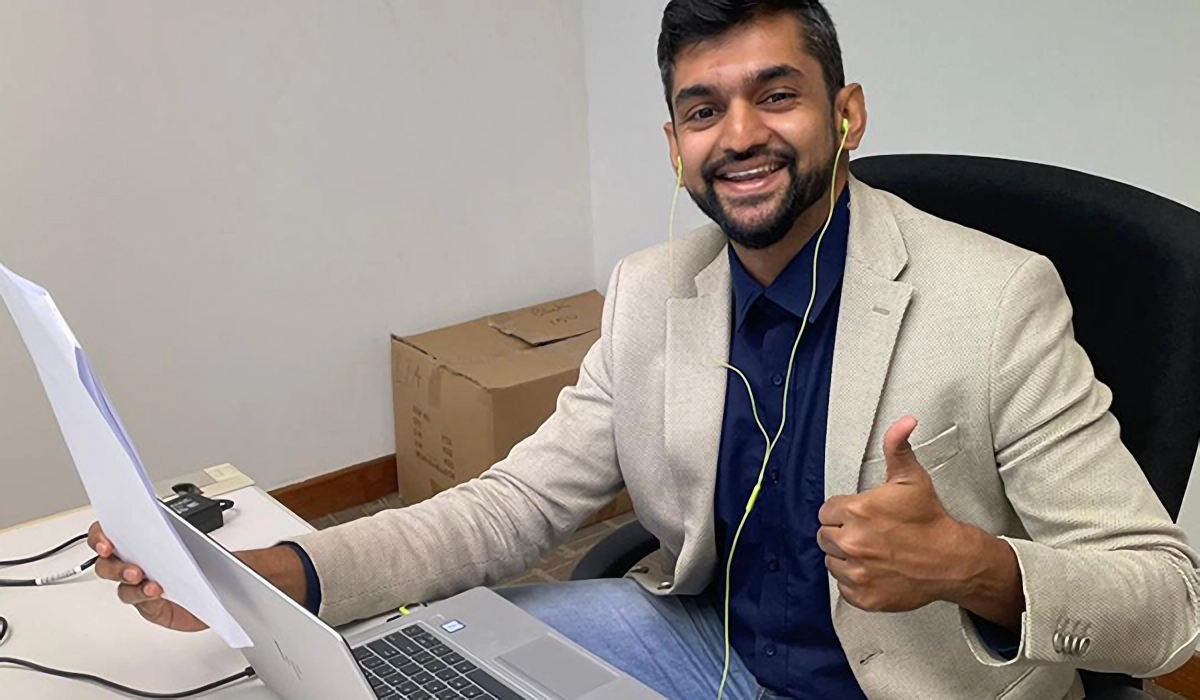Safeguarding Singapore’s Yellow Brick Roads
Safeguarding Singapore’s Yellow Brick Roads

This technological wizard is working towards building ‘digital twins’ with map-based Geographic Information System (GIS) of the road and road-related infrastructures using 3D light detection and ranging sensors. All to better safeguard Singapore’s public transport operations and manage our roads.
Singapore is well-known as a clean and green city. As an urban city, Singapore is working towards a more people-centred land transport system that meets the diverse needs of an inclusive, liveable, and vibrant city comprising of a growing network of 9,000 lane-km of roads and expressways.
Roads occupy 12 per cent of Singapore’s land area. To ensure that traffic and road use is optimal, the management and maintenance of our roads and related infrastructure is crucial. Working behind the scenes to make this happen is Muzni Ziyard from LTA’s Traffic and Road Operations (TRO) group.
The Brains Behind the Operations
To manage increasingly complex road infrastructure, growing constraints in maintenance, and rising public expectations, the Traffic and Road Operations (TRO) group in the LTA digitised their core business processes.
While many drivers may focus on the negatives, like traffic congestion and construction, Muzni Ziyard zeroes in on how he can improve road safety maintenance, operations, and efficiency.

Together with his team, Muzni develops systems that use information and technology, such as data sets and analytics to review and enhance operational maintenance effectiveness. These lead to cost-efficient and quality maintenance management practices.
His daily responsibilities include planning and reviewing operational and maintenance policies, as well as digitising road maintenance and traffic management.
He is also working on process and system enhancements to simplify payment processes for the work done by LTA’s maintenance contractors. This would further enhance the centralised asset management system for the maintenance of road assets that LTA uses.
“As a young engineer holding a bachelor’s degree in civil engineering from the National University of Singapore, it was my desire to join a well-established, and dynamic organisation,” Muzni says. “It keeps me on my toes as there is always something new to learn and do.”
It’s the perfect job for him as he applies his analytical and problem-solving capabilities to enhance operational and maintenance effectiveness of road and road-related assets and also enjoys working with people, being in diverse teams, and staying versatile.
Now, a manager of Operations Policy & Strategy at LTA, his main task is enhancing operational and maintenance effectiveness of our road and traffic assets and also exploring new technologies to contribute towards smoother and safer rides for road users.
Muzni and his teams’ mission is to support maintenance operations and ensuring maintenance works are quickly attended to.
Smooth Travels Galore
The new and improved asset management system will dramatically improve overall maintenance and operational efficiency as it can be used for all road and road-related features.

He is also developing a ‘digital twin’: a map-based Geographic Information System (GIS) containing accurate locations and annotated useful information for all road, structure, and traffic assets in Singapore. This information powerhouse will be integrated with the updated system to make analysis even more robust.
The map-based system allows better visualisation of road asset locations, monitoring and understanding of their condition, making maintenance and management easier.
Hate bumpy rides? You’ll be happy to hear that the asset management system with the GIS capability enables TRO to analyse defect trends on a map-based system. This makes it easier to better understand asset condition, identify hotspots such as potholes and accident-prone areas and fix them faster so that road users can be assured of a smooth journey.
3D LiDAR (light detection and ranging) sensor technology will be used to map the entire Singapore road network. Road and traffic asset features and their attributes will be extracted, validated from the 3D LiDAR maps and are converted into digital twins with map-based Geographic Information System (GIS). The LiDAR sensors can achieve an accuracy of 1 to 2cm, thus high accuracy of the GIS maps can be achieved.
Finding His Heart in the Industry
Having worked in LTA for over a decade as a young civil engineer straight from University, Muzni’s love for his job has never swayed. Why? Because he learns something new every day and has enjoyed countless opportunities to advance his career.
Muzni says confidently, “If you don’t want to be bored, TRO is the place for you. TRO’s dynamic work nature and wide coverage of various road operational and maintenance works will truly be an eye opener to many.”
“The best part of my job is that I’m constantly learning, growing, and contributing to the growth of the organisation. The diverse scope of work I have undertaken, shaped me to be a more versatile and agile individual. I have also been blessed with a great mentor, TRO Deputy Group Director Nedumaran Ramasamy, who has helped and guided me throughout my career,” he continues.
He always reminds himself that, “Be curious and don’t be ashamed to ask questions. Even though work can be stressful at times, don’t forget to enjoy yourself and have fun. At the end of the project, you will reap the fruits of your labour and enjoy a sense of satisfaction.”
If you’re interested in joining Muzni, be prepared to be future-ready! “Digitisation, technology and data-driven businesses using artificial intelligence will be the new trend. Applying this transformation to civil engineering brings a significant change,” he says. “So, jump on board to experience and enjoy this impactful and revolutionary journey, shaping up Singapore’s land transport system.”

